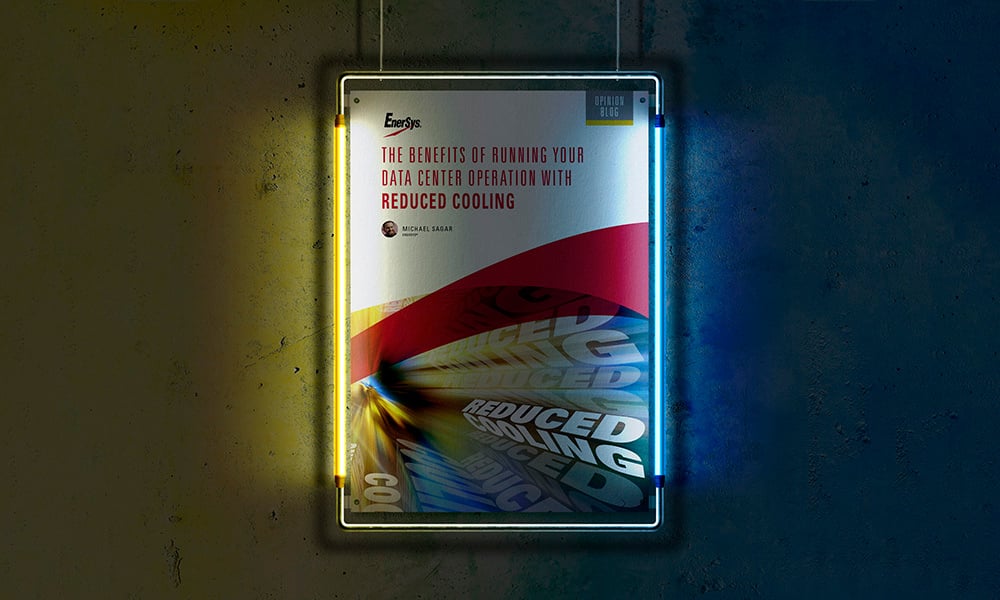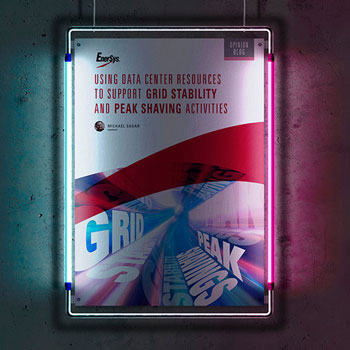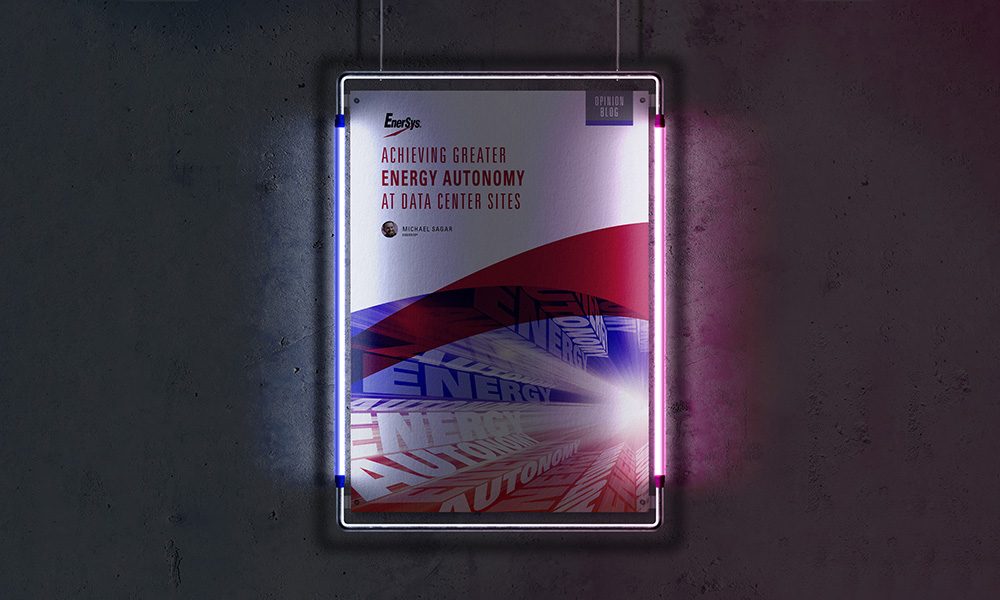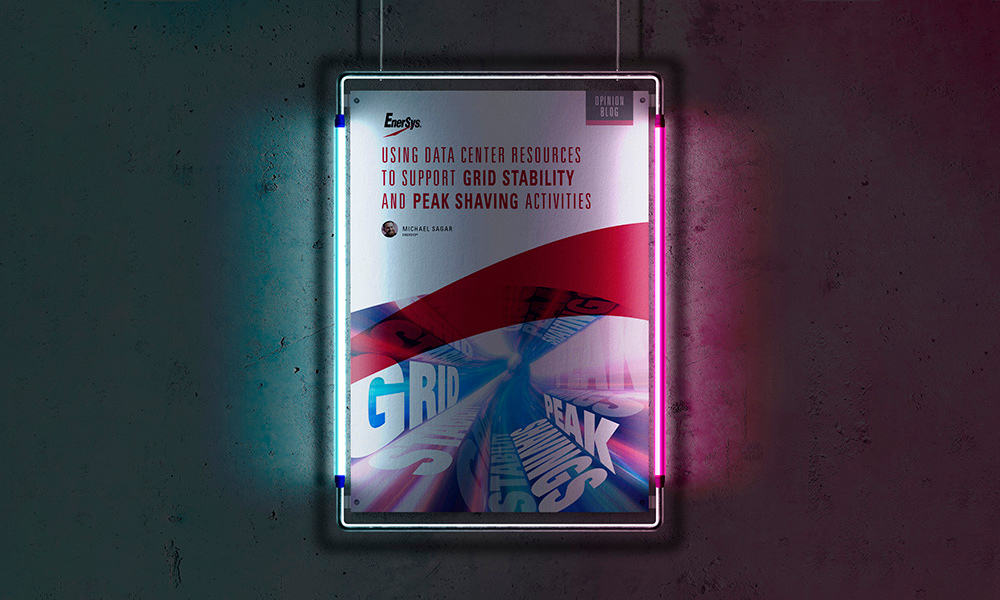The Benefits of Running Your Data Center Operation with Reduced Cooling

To keep up with the unprecedented demand for cloud services, data center operators are looking to increase server rack density, using any space available to add to their capacity. This will require the accompanying cooling normally needing to be ramped up as well.
Budgetary constraints mean operators are also being subjected to increasing pressure to curb their daily running costs. There is also an incentive to lower energy consumption to keep in line with the industry’s increasingly ambitious benchmark expectations about sustainability metrics, including Power Usage Effectiveness (PUE) - a metric that determines how big a proportion of the data center’s overall electricity consumption goes into the core tasks undertaken by its servers. If operators are to maximize their profitability, they need to find an effective way to simultaneously attain these goals. They want to implement a strategy that allows extra capacity to be accommodated while keeping electricity consumption (and its costs) in check.
The impact of cooling costs
Recent studies have shown1 that approximately 40% of a data center’s energy consumption is devoted to cooling data storage and processing hardware.
By becoming less reliant on power-hungry thermal management systems*, the electricity needed for cooling could be reduced. For example, current data2 suggests that reductions of as much as 4% in data center energy costs can be achieved by scaling back cooling mechanisms and letting server inlet temperatures rise by just 1°C (2.2°F). It would, however, have other implications - with systems needing to handle higher operational temperature levels.
One critical aspect will be ensuring that the batteries employed in the data center’s Uninterruptible Power Supply (UPS) system can cope with the stresses that higher temperature operation will bring with it.
TPPL BATTERY UNITS ARE AN ATTRACTIVE OPTION FOR DATA CENTER OPERATORS LOOKING TO REDUCE THEIR THERMAL MANAGEMENT COSTS BY RUNNING THEIR SYSTEMS AT HEIGHTENED TEMPERATURES.
Advanced battery technologies
EnerSys® has worked with many of the world’s leading data center operators for decades and can supply the advanced battery products necessary to address this application scenario. In addition, the inherent robustness of its patented Thin Plate Pure Lead (TPPL) technology means that enhanced lead-acid battery units can be produced, which can deal with significantly higher temperature levels.
These TPPL battery units are an attractive option for data center operators looking to reduce their thermal management costs by running their systems at heightened temperatures. Unlike traditional lead-acid batteries, these units benefit from a pure lead grid construction (rather than an alloy containing elements like calcium and tin). As a result, the superior floating current characteristics translate into less electricity being needed during charging; a reduction of more than 40% compared to traditional lead-acid batteries3 may be witnessed. This helps to further curb the data center’s total electricity usage and enables a lowering of its carbon footprint. Much faster charge times than competing lead-acid batteries are another key advantage derived from the pure lead grid design.
It should be noted that if conventional lead-acid UPS battery units are kept at higher temperatures, there is certain to be a shortening in their working lifespans. This will mean they need to be replaced more frequently - thereby increasing the capital outlay.
EnerSys® TPPL batteries can support use at elevated temperatures for far longer periods than many other solutions on the market. Based on working with customers, and understanding their specific application requirements, it may be possible to achieve five years at up to 30°C/86°F and six years at up to 25°C/77°F. Their long lifespan and lower Total Cost of Ownership (TCO) means that operators do not need to offset the savings made in operational expenses by running at higher temperatures against increased capital investment after initial installation.
THROUGH THE EXTENSIVE EXPERIENCE OF ITS TEAM, ENERSYS® CAN PROVIDE THE ENGINEERING EXPERTISE NECESSARY TO SUPPORT CUSTOMERS IN MODIFYING THEIR SITES’ BATTERY ASSETS SO THAT THEY CAN PUSH UP AMBIENT TEMPERATURE LEVELS.
The value of experience
Each data center site will have its own set of operational criteria - and before moving to higher temperature levels, all of these must be given proper consideration. Differences in terms of the size and scale of a particular facility will mean that evaluation must be done on a case-by-case basis. Under some circumstances, shifting to higher operating temperatures may have validity. Conversely, there will be other situations where this approach may be less favorable. Even in these cases, the adoption of batteries with TPPL technology can mean lower energy consumption is possible because of reduced floating current, and fast recharging capabilities to repeat the duty.
Through the extensive experience of its team, EnerSys® can provide the engineering expertise necessary to support customers in modifying their sites’ battery assets so that they can push up ambient temperature levels. In addition, having carried out a thorough examination of all key parameters, EnerSys® can help data center operators to make better strategic decisions about their battery backup systems. Consequently, fully optimized power supply solutions can be proposed based on the customer’s particular priorities.
Depending on the specific details, the cost reductions within a single site can be considerable. Furthermore, when these are applied over multiple data center facilities within a large international organization, the savings are likely to be even more substantial.
Download Article
REFERENCES
- Elsevier Energy Procedia - Data Center Energy and Cost Saving Evaluation (August 2015).
- Energy Star - 5 Simple Ways to Avoid Energy Waste in Your Data Center (June 2019).
- EnerSys® - The Importance of Choosing the Right Battery for Uninterruptible Power Supplies (October 2019).
*Footnote: A data center’s thermal management system is used to remove the heat generated by the servers.
Caution Concerning Forward-Looking Statements
EnerSys is making this statement in order to satisfy the “Safe Harbor” provision contained in the Private Securities Litigation Reform Act of 1995. Any of the statements contained in this article that are not statements of historical fact may include forward-looking statements that involve a number of risks and uncertainties. A forward-looking statement predicts, projects, or uses future events as expectations or possibilities. Forward-looking statements may be based on expectations concerning future events and are subject to risks and uncertainties relating to operations and the economic environment, all of which are difficult to predict and many of which are beyond our control. For a discussion of such risks and uncertainties that could cause actual results to differ materially from those matters expressed in or implied by forward-looking statements, please see our risk factors as disclosed in the “Risk Factors” section of our annual report on Form 10-K for the most recently ended fiscal year. The statements in this article are made as of the date of this article, even if subsequently made available by EnerSys on its website or otherwise. EnerSys does not undertake any obligation to update or revise these statements to reflect events or circumstances occurring after the date of article.


